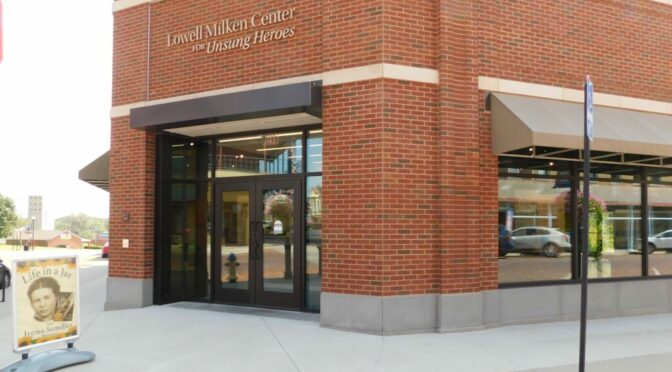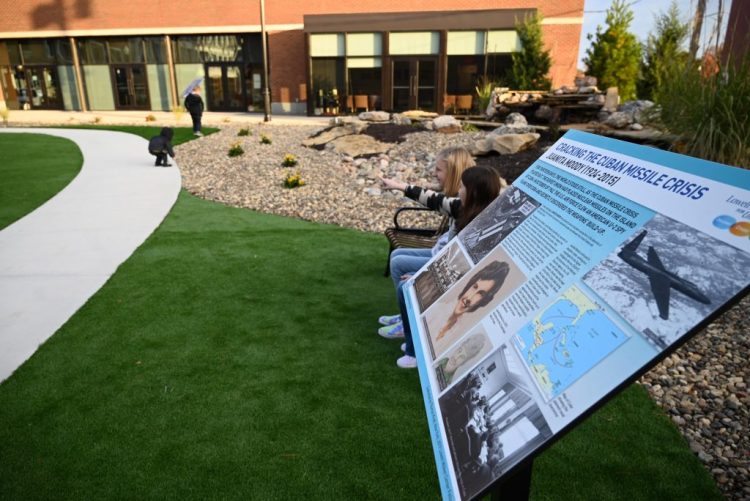“The telescope will be used to educate the community on… amazing unsung heroes of the stars,” Ronda Hassig, funding developer for the center, said.
Hassig wrote the $2,500 grant proposal for the telescope and carrying case and the Fort Scott Area Community Foundation awarded the grant last month.
“The telescope is remote and GPS controlled,” Hassig said. ” We had an astronomer from Nebraska stop by the center and we found out he is the director of the Stargazing Project in Nebraska! He is so excited for us, that he has agreed to come back down as soon as the telescope arrives and help us get used to using it. There’s a definite learning curve but he thinks we can handle it!”
“The telescope will be used in the Lowell Milken Park (adjacent to the center) for viewing of the moon and planets,” she said. “For deeper space, we are hoping to be able to use it at the Fort (Fort Scott National Historic Site) along with their telescope!”
“We hope to get both young and old excited about seeing the stars and the heavens so we will be having star parties here at the center in the Lowell Milken Park,” she said. “The parties will contain stargazing along with guest speakers and expert astronomers from all over the country. Everyone will be invited!”
“I think no matter how old you are, if you have ever looked through a telescope and seen the moon up close, or the actual rings of Saturn, you are hooked forever,” she said.
The telescope has been ordered and the center staff hope to have it sometime this week.
“Then I’ll get to start planning our first star party,” she said. ” I’ll be paying special attention to moonless nights and hopefully cloudless nights and we may get lucky and get to have a party in the next several months. It will be cold but if you’re bundled up you won’t care! There will be warm drinks and treats for everyone!”
“Stay tuned for dates and please plan to come enjoy our newest device at the Lowell Milken Center provided with the gracious funds of the Fort Scott Community Foundation,” she said.
“We are really trying to educate the community on all of the different unsung heroes here at the Lowell Milken Center, by having fun and having educational activities around those heroes,” she said.
Two of the astronomy heroes that are featured at the center are:
“Henrietta Swan Leavitt was born right after the Civil War and was educated at Oberlin and Radcliffe,” Hassig said. “She got excited about astronomy after taking a course on it. When she graduated she began volunteering at the Harvard College Observatory and after 14 years she was paid for her work at $.30 an hour. She was essentially 1 of 20 women computers. Through her work, Leavitt earned graduate credit towards her degree but never completed it. She did however make an amazing discovery – she figured out how to measure objects in space. This discovery led to the launching of the Hubble Telescope and more recently the Webb Telescope! As she aged, her health got worse and a bout with cancer caused her to lose her hearing. She died at age 53, but her dedication to astronomy has given us some of our most advanced knowledge about space!”
“Gene Shoemaker was the founder of astrogeology,” Hassig said. “The first person to determine the origin of the famous Barringer Meteor Crater in Arizona, the first director and creator of the Astrogeology Research Program of the U.S. Geological Survey in Flagstaff, Arizona, and along with David Levy discovered the Shoemaker-Levy Comet.
“Shoemaker worked for NASA preparing himself and the other astronauts to walk on the moon. Gene was to be the first geologist on the moon. But after all his hard work he was unable to go to the moon because he had Addison’s Disease. He commentated the moonwalk with CBS News anchorman Walter Cronkite during the live flights. Although he was horribly disappointed not to go, he kept looking for impact craters and space rocks. He searched for craters and rocks all over the world. He was looking for craters in Australia when he was tragically killed in a car accident. NASA wanted to honor this amazing scientist so they called his family and asked for some of his ashes. They put the ashes in a space probe and crashed it on the moon. Gene Shoemaker is the only human buried on the moon and just one of two buried in space.”


